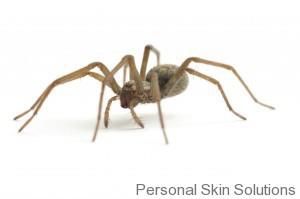 Do you suffer from those pesky spider veins (broken capillaries) on your face a chest? Sometimes these are genetic, sometimes caused by sun damage, and sometimes from smoking. Topical skin care products can do nothing to treat these skin conditions, however some light therapies have shown great success in reducing, or eliminating these conditions (and more!)
Do you suffer from those pesky spider veins (broken capillaries) on your face a chest? Sometimes these are genetic, sometimes caused by sun damage, and sometimes from smoking. Topical skin care products can do nothing to treat these skin conditions, however some light therapies have shown great success in reducing, or eliminating these conditions (and more!)
The Exterminator: IPL
Intense pulsed light (IPL), or high-intensity pulsed light therapy, uses broad-spectrum light that filters out unwanted wavelengths as a means of treating many different skin conditions and abnormalities. IPL has been proven effective in treating the following:
Age spots
Fine lines and wrinkles
Facial flushing
Redness
Broken capillaries/spider veins
Telangiectasias
Hemangiomas
Minor sun damage
Port wine stains
Tattoos
Varicose veins
Unwanted hair
This therapy is based on high-intensity pulses of light that penetrate the skin. There are several different machines that emit different wavelengths of IPL to penetrate different distances into the skin. The different wavelengths reach and treat the different conditions mentioned above.
What makes this a favorable treatment option is that IPL treatments are quick, gentle and non-invasive. When a doctor, or well-trained nurse/technician performs the procedure, the result can be the overall improvement of the skin’s tone, and reduction in facial redness, resulting in a more luminous, younger looking skin. The great news is that patients can see dramatic results within a very short period of time—with no downtime, or interruption of routine activities.
Is IPL the right treatment option for you?
If you suffer from any of the above listed conditions, you may want to speak with your physician.
IPL Treatment might not be right for you if:
- You scar easily, or are prone to developing keloid-type scars
- If your skin easily develops hyperpigmentation, or hypopigmentation
- Have diabetes, as your body’s wound-healing ability might be compromised
How the IPL treatment works
The IPL manufacturers typically recommend several treatments spaced three weeks apart for optimal success. The treatment itself is performed in your physician’s office, and does not take very long. Typically, after applying a topical anesthetic to the treatment area gel is applied and a glass prism is placed over the treatment area. Pulses of intense light will be flashed through the prism, directed at the treatment area. The area that was treated may be slightly red after your procedure, and there could be a bit of inflammation/swelling. It is VERY important to wear sunscreen daily when you have had the IPL treatment. Although rare, blistering or slight bleeding can occur after IPL therapy. Other potential risks may include pigment changes and scarring.
Potential side-effects of IPL treatments:
- Blistering
- Slight bleeding
- Pigment changes (not favorable)
- Scarring
Typical Cost of the IPL Treatment
On average, IPL costs between $400 and $800 dollars per treatment, and as mentioned above, success will require multiple treatments. Be sure you know what/how many you are paying for.
Have you ever tried an IPL treatment? What were your results?
&locale;&layout;&action;&width;&height;&colorscheme;
